How to replace the control module in a washing machine?
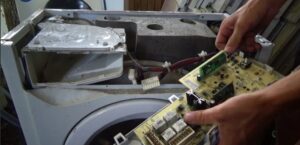 Some automatic machine parts are easier to replace with new ones than to repair. For example, the main electronic module. The work to fix it can cost the equivalent of buying a working unit. You can replace the control module in a washing machine yourself. The main thing is to strictly follow the instructions for actions so as not to confuse anything. Let's figure out how to do the work ahead correctly.
Some automatic machine parts are easier to replace with new ones than to repair. For example, the main electronic module. The work to fix it can cost the equivalent of buying a working unit. You can replace the control module in a washing machine yourself. The main thing is to strictly follow the instructions for actions so as not to confuse anything. Let's figure out how to do the work ahead correctly.
Finding, removing and installing the board
Most washing machines have an electronic module located behind the front panel. The location of the controller depends on the type of loading of the machine. The control unit has an impressive size, so it is difficult not to notice it.
The manufacturer tells you in the instructions for the washing machine where the control module is located.
You can remove the module yourself. The algorithm of actions will be as follows:
- turn off the power to the automatic machine;
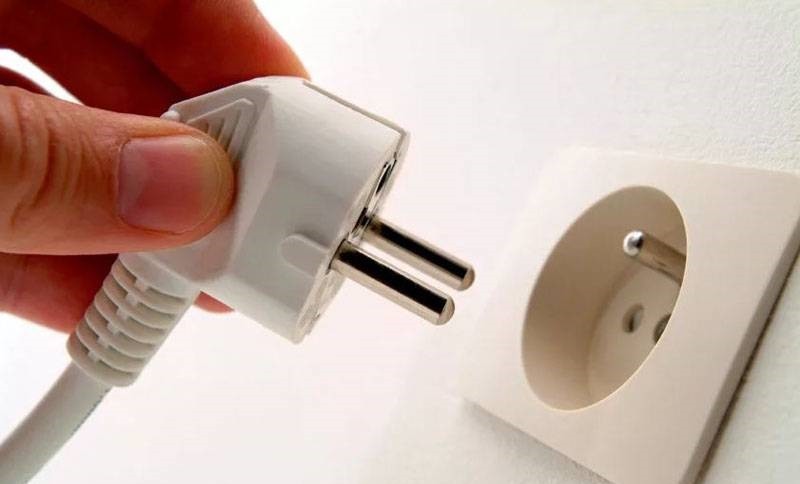
- close the valve responsible for the water supply;
- disconnect the washing machine from the water supply and sewerage;
- remove the top panel of the case (to do this, unscrew the pair of bolts holding it, slide the cover back and pull up);
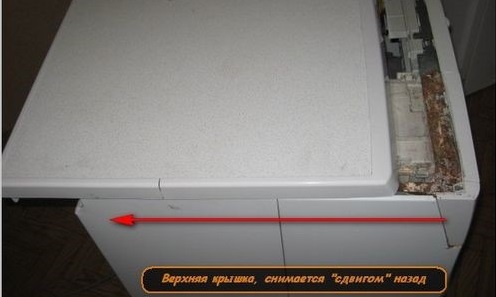
- pull out the powder receptacle and put it aside;

- Unscrew the screws located near the dispenser hole;
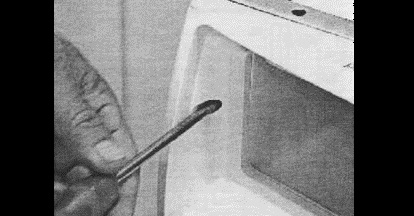
- remove the bolts holding the control panel;
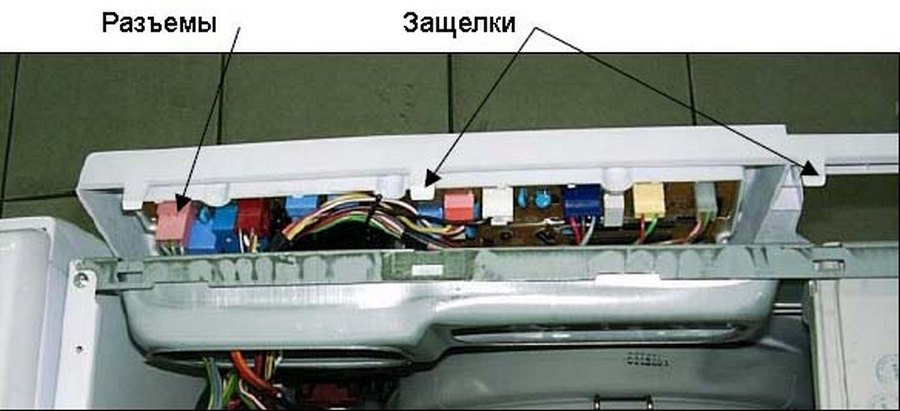
- Having dealt with the latches, carefully, so as not to break the wires, remove the “tidy”;
- take a photo of the wiring diagram;
- disconnect the wires from the dashboard, move it to the side;

- Unscrew the screws securing the electronic board;
- pull the control module out of the housing.
Inspect the electronic unit. If the control board is damaged, it will show scorch marks, burn marks, rust, or mechanical defects. Sometimes, to restore the module's operation, it is enough to solder the track or replace the capacitor, but in most cases the repair will be more complex and expensive.
You can try to replace the control module yourself when the warranty has expired; if it is still valid, contact the service center.
Installation of a working, new controller is performed in the reverse order. First, the module is fixed in the housing, then all the chips with wires are connected to the control panel. You need to check the correct connection of the contacts using photographs taken earlier.
After assembling the case, connect the machine to the network and check the operation of the “home assistant”. If the “brain” responds to all commands given by the user, then the replacement was completed correctly. Run a test cycle and observe the equipment.
Is it really necessary to change the module?
Before attempting to replace the control unit, it is worth finding out whether it has actually failed. It often happens that the problem is not in the electronic module at all, but in some other broken part, and it is this that creates the illusion that the controller is damaged. This is fundamentally important, because if another node is damaged, then repairing the board will not change anything, and you will be throwing money down the drain.
How to diagnose a broken electronic module? There are several typical signs of this malfunction. In 50 percent of cases, washing machines themselves indicate problems with the processor by their behavior. We'll tell you in what situations you might suspect problems with the control board.
- The machine cannot wring things out, and the dashboard freezes and does not respond to user commands. The fault code is not displayed on the display.
- All the indicators on the dashboard sparkle chaotically, and it is impossible to select and activate a washing program.
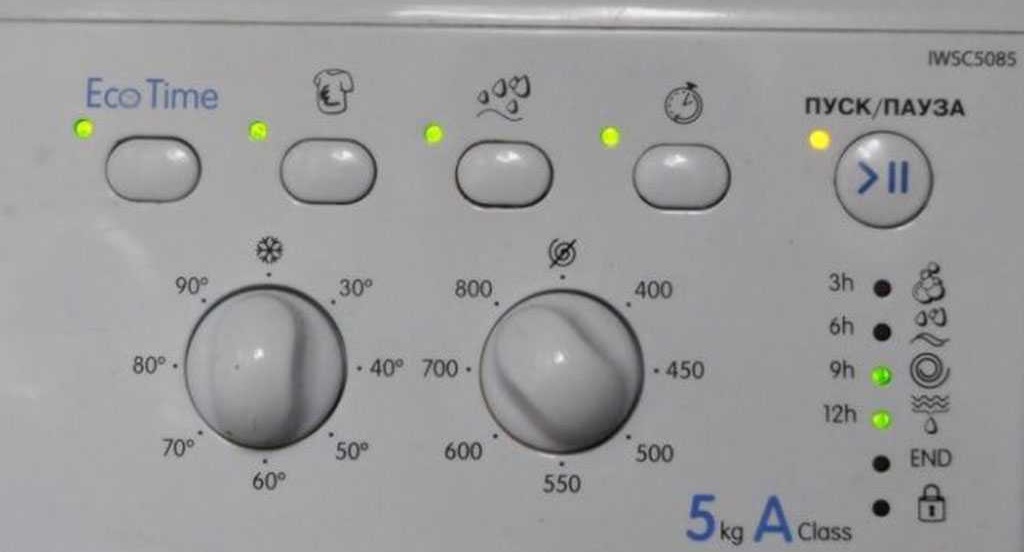
- The washing machine allows the user to select the desired program and start the wash, but the water intake into the tank does not begin, or all the liquid is immediately drained by gravity. Then the machine simply “freezes”, and only a complete reboot helps bring it back to “life”. Moreover, if you activate the cycle again, it can proceed as usual.
- The machine, regardless of the set program, washes for 2-4 hours without stopping and without moving on to rinsing or spinning. The pump does not attempt to pump waste water out of the system. After a few hours the equipment simply freezes.
- After starting, when trying to select the desired program, the machine instantly freezes and turns off.
- The washing mode is selected, the cycle starts, but the machine does nothing further. Water does not flow into the system, the drum does not start to rotate.
- The motor very often changes the speed of the centrifuge.
- The heating element ignores the thermostat readings and cannot bring the water in the tank to the desired temperature, leaving it either cool or too hot.
These “symptoms” only hint at damage to the controller; to verify the malfunction, more in-depth diagnostics will be required.
Each of the listed signs may indicate either a breakdown of the main unit or a failure of some sensor. For example, the reason that the water in the tank does not heat up to the required temperature may be a faulty heating element, and not an electronic module. Therefore, be sure to test the machine.
All modern washing machines are equipped with a self-determination system for problems. First of all, it is recommended to run an autotest of the automatic machine, and then, based on the error code issued, perform diagnostics of the sensors manually. How to activate the “test” mode?
Self-diagnosis starts differently on different washing machines. You can read how to activate the test mode in the equipment instructions. Ultra-modern models have a button of the same name on the dashboard, and the user will simply need to press it.
For example, on Ardo machines that do not have a separate “Self-diagnosis” button, auto-test is activated as follows:
- turn the program selector to the vertical position so that the arrow “looks” down;
- set the temperature to zero;
- make sure the machine drum is empty;
- Press all the buttons on the dashboard at the same time.
During the autotest, the machine display will display a fault code that needs to be deciphered.
An error generated by the washing machine will indicate either a breakdown of the control module, or a failure of some other sensor or component of the automatic machine. If the fault code is deciphered as “damage to the heating element”, then there is no need to go into the electronics, just check and replace the heating element.
Autotest does not always indicate a specific problem. It happens that after deciphering the error code, the user receives several possible reasons: a broken inlet valve, a broken wiring, or a malfunction of the control module. Then you will have to check each element manually.
You can make sure that the electronic unit is not functioning correctly by testing it with a multimeter.Other “suspicious” elements should also be subjected to this procedure. All nodes are tested with the device one by one, and their resistance is measured. Although the work is painstaking, it will allow you to be 100 percent sure that the module is broken.
Interesting:
Reader comments
- Share your opinion - leave a comment
Categories
Washing machine repair


For buyers

For users

Dishwasher

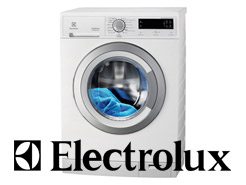

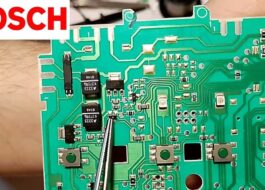
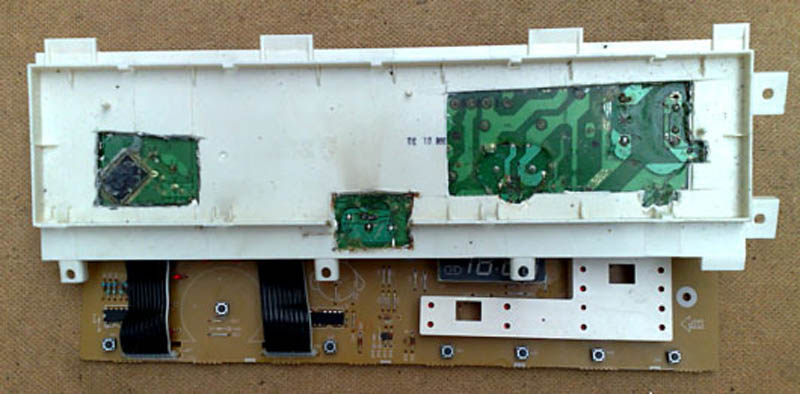

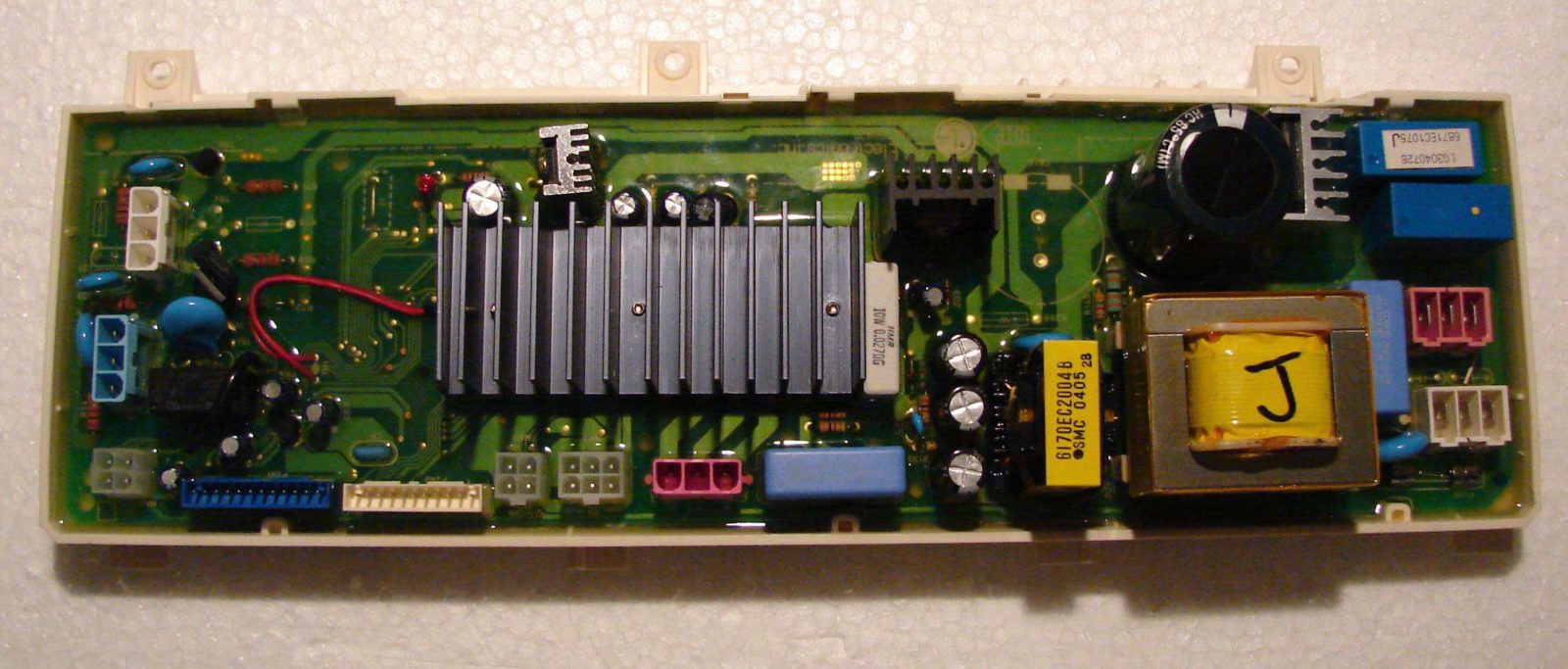










Add a comment